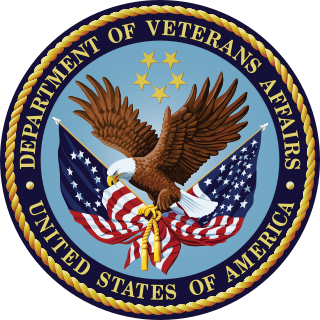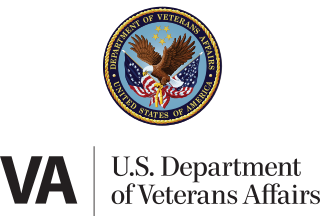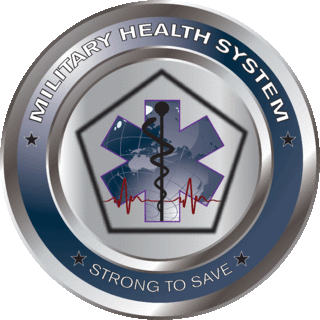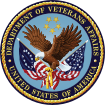
The Servicemen's Readjustment Act of 1944, commonly known as the G.I. Bill, was a law that provided a range of benefits for some of the returning World War II veterans. The original G.I. Bill expired in 1956, but the term "G.I. Bill" is still used to refer to programs created to assist some of the U.S. military veterans.

The United States Department of Veterans Affairs (VA) is a Cabinet-level executive branch department of the federal government charged with providing life-long healthcare services to eligible military veterans at the 170 VA medical centers and outpatient clinics located throughout the country. Non-healthcare benefits include disability compensation, vocational rehabilitation, education assistance, home loans, and life insurance. The VA also provides burial and memorial benefits to eligible veterans and family members at 135 national cemeteries.

A military discharge is given when a member of the armed forces is released from their obligation to serve. Each country's military has different types of discharge. They are generally based on whether the persons completed their training and then fully and satisfactorily completed their term of service. Other types of discharge are based on factors such as the quality of their service, whether their service had to be ended prematurely due to humanitarian or medical reasons, whether they had been found to have drug or alcohol dependency issues and whether they were complying with treatment and counseling, and whether they had demerits or punishments for infractions or were convicted of any crimes. These factors affect whether they will be asked or allowed to re-enlist and whether they qualify for benefits after their discharge.

The Veterans Health Administration (VHA) is the component of the United States Department of Veterans Affairs (VA) led by the Under Secretary of Veterans Affairs for Health that implements the healthcare program of the VA through the administration and operation of numerous VA Medical Centers (VAMC), Outpatient Clinics (OPC), Community Based Outpatient Clinics (CBOC), and VA Community Living Centers Programs.

The Defense Commissary Agency (DeCA), headquartered at Fort Lee (Virginia), is an agency of the United States Department of Defense (DoD) that operates nearly 240 commissaries worldwide. American military commissaries sell groceries and household goods to active-duty, Guard, Reserve, and retired members of all eight uniformed services of the United States and eligible members of their families at cost plus surcharge, saving authorized patrons thousands of dollars compared to civilian supermarkets.

The Army & Air Force Exchange Service is the retailer on U.S. Army and Air Force installations worldwide. The Exchange is headquartered in Dallas, Texas, and its director/chief executive officer is Tom Shull. The oldest and the largest of the Department of Defense's exchange services, it is No. 53 on the National Retail Federation's Top 100 Retailers list.
A VA loan is a mortgage loan in the United States guaranteed by the United States Department of Veterans Affairs (VA). The program is for American veterans, military members currently serving in the U.S. military, reservists and select surviving spouses and can be used to purchase single-family homes, condominiums, multi-unit properties, manufactured homes and new construction. The VA does not originate loans, but sets the rules for who may qualify, issues minimum guidelines and requirements under which mortgages may be offered and financially guarantees loans that qualify under the program.

The Veterans Benefits Administration (VBA) is an agency of the U.S. Department of Veterans Affairs. It is responsible for administering the department's programs that provide financial and other forms of assistance to veterans, their dependents, and survivors. Major benefits include Veterans' compensation, Veterans' pension, survivors' benefits, rehabilitation and employment assistance, education assistance, home loan guaranties, and life insurance coverage.

The Hale Koa Hotel, which means House of the Warrior in Hawaiian, is an Armed Forces Recreation Center (AFRC) resort hotel located on Waikiki Beach and owned by the United States Department of Defense. It sits on the southeast corner of Fort DeRussy on the western end of Waikiki in Honolulu. The hotel has more than one million guests every year, all of whom require the United States Uniformed Services Privilege and Identification Card to lodge at the hotel. Though owned by the DOD, the hotel is entirely self-sustaining, and does not receive any government funding.

A United States Uniformed Services Privilege and Identification Card is an identity document issued by the United States Department of Defense to identify a person as a member of the Armed Forces or a member's dependent, such as a child or spouse.

The Disabled American Veterans (DAV) is an organization created in 1920 by World War I veterans for disabled military veterans of the United States Armed Forces that helps them and their families through various means. It was issued a federal charter by Congress in 1932. It currently has over 1 million members. As a 501(c)(4) social welfare organization, it is outside the purview of – and therefore not rated by – Charity Navigator. DAV's Employer Identification Number (EIN) is 31-0263158.
The President's Commission on Care for America's Returning Wounded Warriors, also known as the Dole-Shalala Commission, was established on March 6, 2007 when U.S. President George W. Bush signed Executive Order 13426. The Commission was established to examine and recommend improvements to the effectiveness and quality of transition from to return to military service or civilian society, health care, benefits, outreach to Service members and awareness by Service members of health care and benefits programs.

The Military Health System (MHS) is a form of nationalized health care operated within the United States Department of Defense that provides health care to active duty, Reserve component and retired U.S. Military personnel and their dependents.
Defense Enrollment Eligibility Reporting System (DEERS) is a computerized database for United States Service members, military retirees, 100% VA Disabled Veterans, dependents, DoD active Contractors, and others worldwide who are entitled to Public Key Infrastructure and TRICARE eligibility.
The United States military formerly excluded gay men, bisexuals, and lesbians from service. In 1993, the United States Congress passed, and President Bill Clinton signed a law instituting the policy commonly referred to as "Don't ask, don't tell" (DADT) which allowed gay, lesbian, and bisexual people to serve as long as they did not reveal their sexual orientation. Although there were isolated instances in which service personnel were met with limited success through lawsuits, efforts to end the ban on openly gay, lesbian, and bisexual people serving either legislatively, or through the courts initially proved unsuccessful.
Swords to Plowshares is a veterans organization that provides job training, housing, and benefits advocacy to low income and homeless U.S. military veterans. Swords to Plowshares also operates a drop-in center for veterans requiring emergency services, and engages in policy work. It is a 501(c)(3) non-profit organization headquartered in San Francisco, supported by governmental and private grants, as well as donations from individuals. Michael Blecker is the Executive Director.
In July 2008 the Post-9/11 GI Bill was signed into law, creating a new robust education benefits program rivaling the WWII Era GI Bill of Rights. The new Post 9/11 GI Bill, which went into effect on August 1, 2009, provides education benefits for service members who served on active duty for 90 or more days since September 10, 2001. These benefits are tiered based on the number of days served on active duty, creating a benefit package that gives current and previously activated National Guard and Reserve members the same benefits as active duty servicemembers.

The United States has compensated military veterans for service-related injuries since the Revolutionary War, with the current indemnity model established near the end of World War I. The Department of Veterans Affairs (VA) began to provide disability benefits for post-traumatic stress disorder (PTSD) in the 1980s after the diagnosis became part of official psychiatric nosology.

United States military veteran suicide is an ongoing phenomenon regarding the high rate of suicide among U.S. military veterans in comparison to the general civilian public. A focus on preventing veteran suicide began in 1958 with the opening of the first suicide prevention center in the United States. During the mid 1990s, a paradigm shift in addressing veteran suicide occurred with the development of a national strategy which included several Congressional Resolutions. More advancements were made in 2007, when the Joshua Omvig Veterans Suicide Prevention Act created a comprehensive program including outreach at each Veterans Affairs Office (VA) and the implementation of a 24-hour crisis hotline. PTSD, depression, and combat-related guilt in veterans are often related to suicide as it can be difficult for veterans to transition to civilian life.

The Veterans Identification Card (VIC) is an identification card issued by the US Department of Veterans Affairs (VA) to former military personnel as part of the Veterans Identification Card Act of 2015. The VIC allows veterans to demonstrate proof of service without the need for carrying their DD214, namely for discounts on goods and services offered by private individuals or organizations to veterans.
















